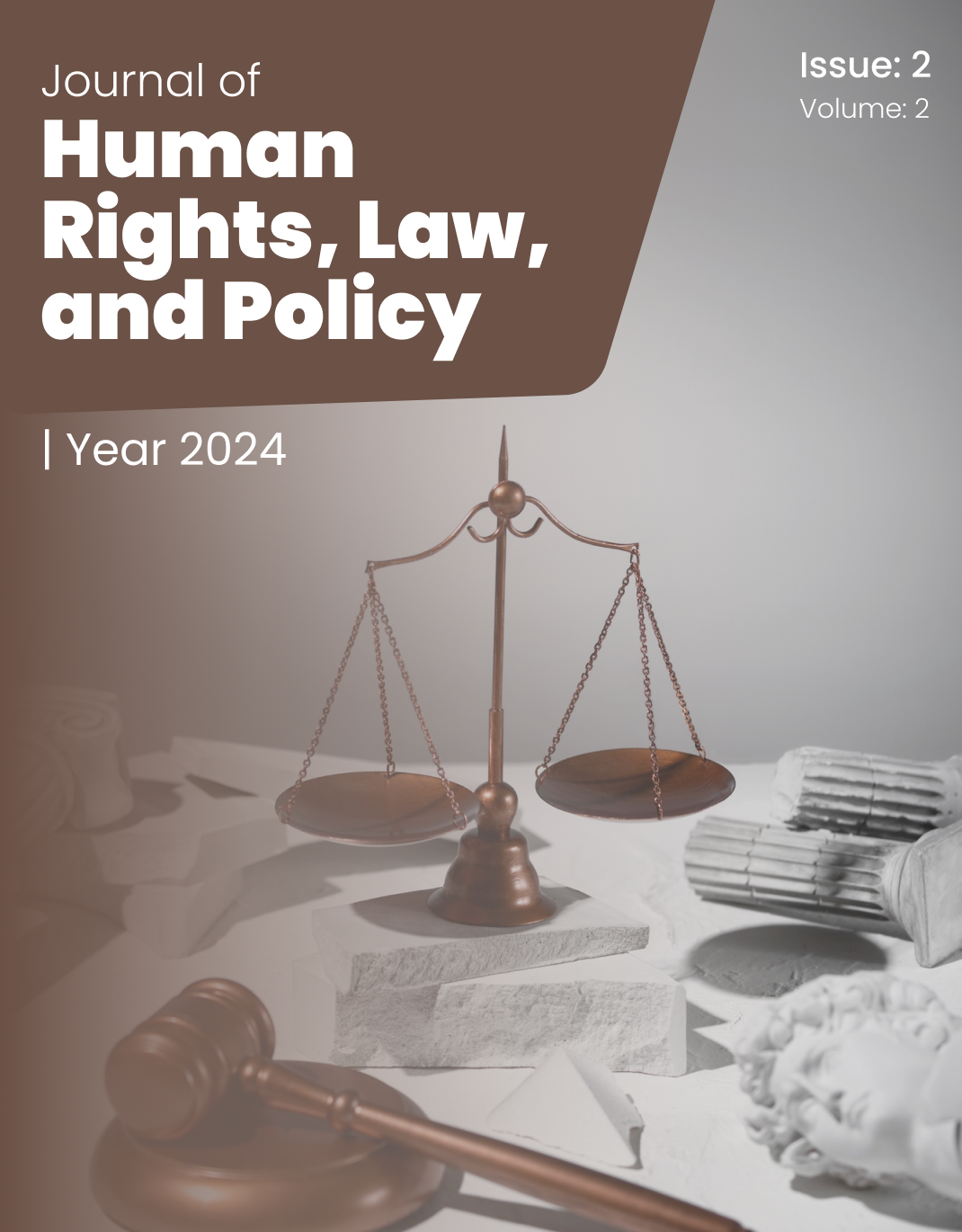The Human Rights Impact of Biometric Surveillance: A Community-Based Study
Keywords:
Biometric surveillance, human rights, privacy, qualitative study, Tehran, data security, discrimination, technological ethicsAbstract
This study aimed to explore the human rights impact of biometric surveillance through the lived experiences and perceptions of community members in Tehran. A qualitative research design was employed, utilizing semi-structured interviews with 27 participants recruited purposively from Tehran. Data collection continued until theoretical saturation was achieved. Interview transcripts were analyzed thematically using NVivo software to identify key themes related to privacy concerns, legal and ethical issues, social and community impacts, and technological factors. Four main themes emerged from the analysis. Privacy concerns dominated, with participants highlighting limited awareness of data collection, fears about data security breaches, surveillance-induced anxiety, behavioral modifications, and distrust of authorities. Legal and ethical issues revealed perceived regulatory gaps, challenges in obtaining genuine consent, and calls for accountable and ethical technology use. Socially, biometric surveillance was associated with discrimination, social exclusion, erosion of trust, low public awareness, and disproportionate effects on vulnerable groups. Technological factors, including accuracy limitations, data management practices, technological accessibility, system integration, user control deficits, and lack of transparency, further shaped participants’ perceptions. These findings underscore the multifaceted human rights challenges posed by biometric surveillance in a context with evolving technological adoption but insufficient legal safeguards. The study demonstrates that biometric surveillance significantly impacts individuals’ privacy, autonomy, and social well-being, particularly in settings lacking robust regulation and public engagement. Addressing these issues requires comprehensive legal frameworks, transparent and ethical technology deployment, enhanced public awareness, and inclusive governance models to safeguard human rights in the digital age.
Downloads
References
Ball, K., Haggerty, K. D., & Lyon, D. (Eds.). (2012). Routledge handbook of surveillance studies. Routledge.
Benjamin, R. (2019). Race after technology: Abolitionist tools for the new Jim code. Polity Press.
Bradshaw, S., Millard, C., & Walden, I. (2011). Contracts for clouds: Comparison and analysis of the terms and conditions of cloud computing services. International Journal of Law and Information Technology, 19(3), 187–223. https://doi.org/10.1093/ijlit/eaq020
Buolamwini, J., & Gebru, T. (2018). Gender shades: Intersectional accuracy disparities in commercial gender classification. Proceedings of Machine Learning Research, 81, 1–15.
De Hert, P., & Papakonstantinou, V. (2018). The new General Data Protection Regulation: Still a sound system for the protection of individuals? Computer Law & Security Review, 34(2), 222–235. https://doi.org/10.1016/j.clsr.2017.05.014
Diakopoulos, N. (2016). Accountability in algorithmic decision making. Communications of the ACM, 59(2), 56–62. https://doi.org/10.1145/2844110
Eubanks, V. (2018). Automating inequality: How high-tech tools profile, police, and punish the poor. St. Martin’s Press.
Floridi, L. (2018). Artificial intelligence, education, and the fourth industrial revolution. Philosophy & Technology, 31(4), 467–479. https://doi.org/10.1007/s13347-018-0311-0
Fuchs, C. (2017). Social media: A critical introduction (2nd ed.). SAGE.
Garvie, C., Bedoya, A., & Frankle, J. (2016). The perpetual line-up: Unregulated police face recognition in America. Georgetown Law Center on Privacy & Technology. https://www.perpetuallineup.org/
Greenleaf, G. (2018). Global data privacy laws 2017: 120 national data privacy laws including Indonesia and Turkey. Privacy Laws & Business International Report, (147), 10–13.
Grother, P., Ngan, M., & Hanaoka, K. (2019). Ongoing face recognition vendor test (FRVT), part 2: Identification. NIST Interagency/Internal Report (NISTIR)–8238. National Institute of Standards and Technology.
Jain, A. K., Ross, A., & Nandakumar, K. (2011). Introduction to biometrics. Springer.
Karimi, S., & Mohammadi, A. (2021). Public perception of surveillance technologies: A case study in Tehran. Journal of Iranian Social Studies, 15(2), 45–62.
Kuner, C. (2017). The General Data Protection Regulation: A commentary. Oxford University Press.
Kumar, S., & Shah, S. (2020). Public perceptions of biometric surveillance in emerging economies: A review. Journal of Information Privacy and Security, 16(3), 175–194.
Lyon, D. (2018). The culture of surveillance: Watching as a way of life. Polity Press.
Mantelero, A. (2016). Personal data for decisional purposes in the age of big data: From an individual to a collective dimension of data protection. Computer Law & Security Review, 32(2), 238–255. https://doi.org/10.1016/j.clsr.2016.02.004
Matsakis, L. (2019). Biometric data is forever. Wired. https://www.wired.com/story/biometric-data-is-forever/
Nissenbaum, H. (2010). Privacy in context: Technology, policy, and the integrity of social life. Stanford University Press.
Noble, S. U. (2018). Algorithms of oppression: How search engines reinforce racism. NYU Press.
O’Flaherty, K. (2020). Biometric data breaches and risks. Cybersecurity Journal, 12(1), 24–33.
Rahimi, M. (2019). Biometric technologies in Iran: Applications and challenges. Iranian Journal of Technology, 43(4), 213–227.
Solove, D. J. (2021). Understanding privacy (2nd ed.). Harvard University Press.
Taylor, L. (2016). Transparent surveillance: Privacy, consent, and trust. Palgrave Macmillan.
Taylor, L., Floridi, L., & van der Sloot, B. (2017). Group privacy: New challenges of data technologies. Philosophy & Technology, 31(4), 369–374. https://doi.org/10.1007/s13347-017-0261-6
Tufekci, Z. (2015). Algorithmic harms beyond Facebook and Google: Emergent challenges of computational agency. Colorado Technology Law Journal, 13(203), 203–218.
United Nations. (1948). Universal Declaration of Human Rights. https://www.un.org/en/about-us/universal-declaration-of-human-rights
United Nations. (1966). International Covenant on Civil and Political Rights. https://www.ohchr.org/en/professionalinterest/pages/ccpr.aspx
van Dijk, J. (2020). The digital divide. Polity Press.
Zuboff, S. (2019). The age of surveillance capitalism: The fight for a human future at the new frontier of power. PublicAffairs.
Downloads
Published
Submitted
Revised
Accepted
Issue
Section
License

This work is licensed under a Creative Commons Attribution-NonCommercial 4.0 International License.

